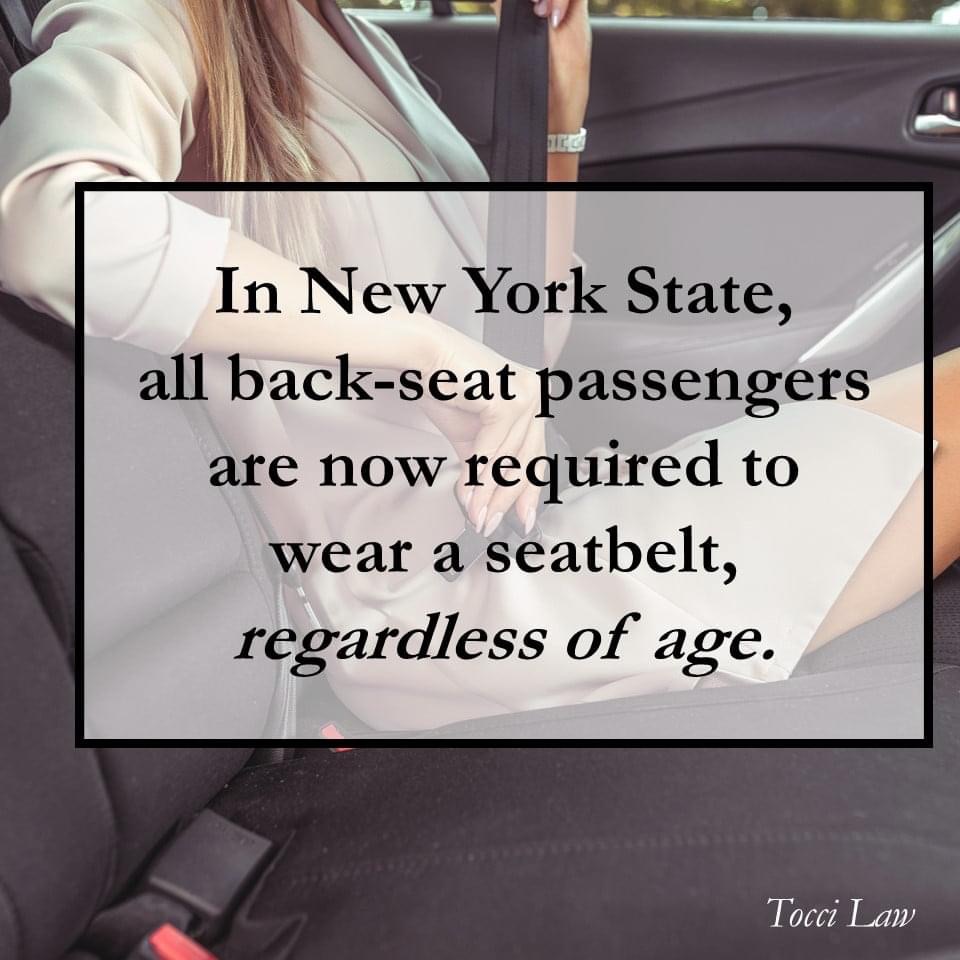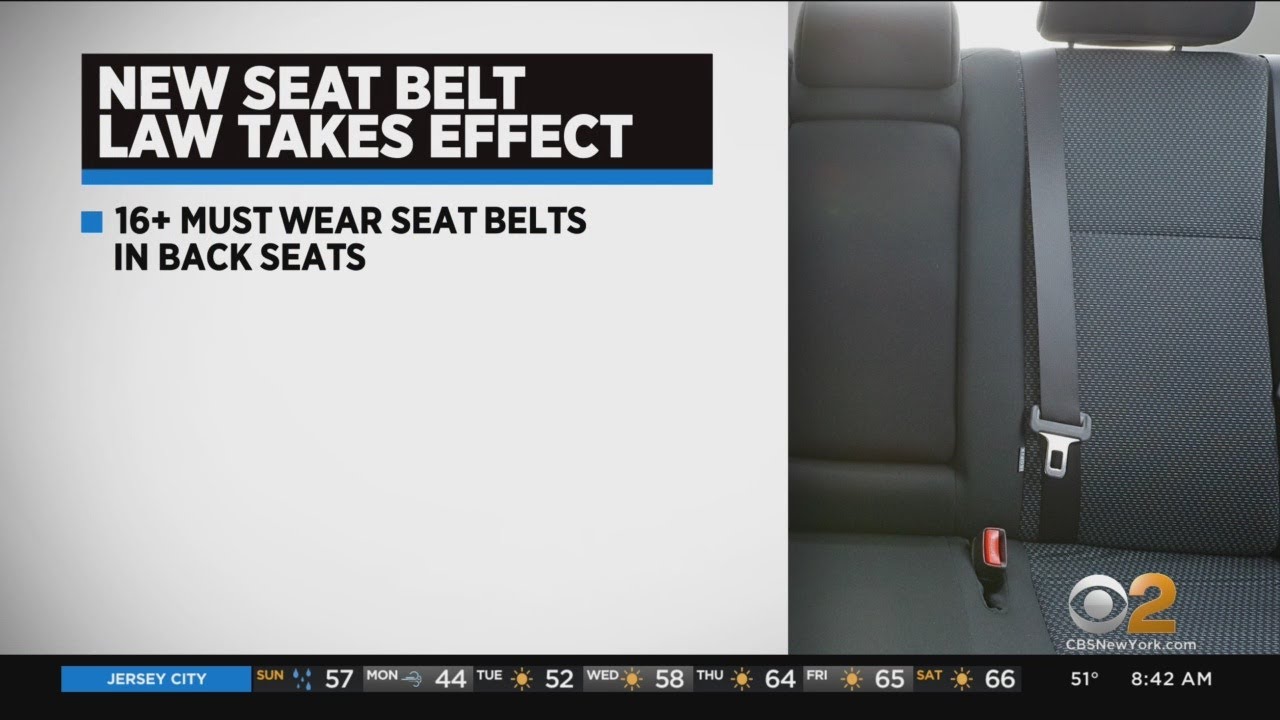Seat Belt Law Overview

New York State’s seat belt law mandates the use of safety restraints for all vehicle occupants, aiming to reduce injuries and fatalities in traffic accidents. The law is comprehensive, covering various vehicle types and age groups, with specific requirements for children. Penalties for non-compliance are significant, emphasizing the importance of adherence to the law.
Who Must Wear a Seat Belt
New York’s seat belt law applies to virtually all occupants of motor vehicles. Drivers and front-seat passengers are always required to wear seat belts, regardless of age. Rear-seat passengers, while not subject to the same stringent enforcement as front-seat occupants, are also required to wear seat belts if they are 16 years of age or older. Exceptions are made for certain circumstances, such as specific medical conditions, but these must be documented and justified. It’s crucial to understand that even if an exemption applies, it is the responsibility of the occupant to ensure they are complying with the law as much as possible.
Vehicles Covered by the Law
The New York State seat belt law encompasses a broad range of vehicles. This includes passenger cars, SUVs, pickup trucks, and vans. The specific type of vehicle does not exempt anyone from the seat belt requirement. The law applies to all vehicles operating on public roads within the state. This ensures consistent safety standards across all types of vehicles commonly used in New York.
Age-Specific Seat Belt Requirements
The following table summarizes the age-specific seat belt requirements in New York State. Proper restraint systems are crucial for children’s safety, and the law reflects this by requiring specific child safety seats and booster seats depending on the child’s age and weight. Failure to comply with these requirements can result in significant fines.
| Age Group | Front Seat | Rear Seat | Specific Requirements |
|---|---|---|---|
| Under 8 years old | Appropriate child restraint system | Appropriate child restraint system | Specific weight and height restrictions apply for child seats and booster seats. |
| 8-15 years old | Booster seat or seat belt (depending on height and weight) | Booster seat or seat belt (depending on height and weight) | Children must be properly secured in a booster seat until they meet the height and weight requirements for a standard seat belt. |
| 16 years and older | Seat belt required | Seat belt required | All passengers 16 and older must wear a seat belt. |
Exceptions and Exemptions

New York’s seat belt law, while broadly applicable, does include some exceptions and exemptions. These are generally limited and apply only under specific, narrowly defined circumstances. It’s crucial to understand these exceptions to avoid potential legal issues. Misunderstanding or misinterpreting these exemptions can lead to penalties.
While the law strongly encourages seat belt use for all occupants, certain situations may legally excuse individuals from wearing one. These exemptions are not intended to encourage non-compliance but rather to address legitimate practical limitations. The burden of proof to demonstrate eligibility for an exemption rests with the individual.
Exemptions Based on Vehicle Type and Use
Certain vehicle types and specific operational contexts are exempt from the mandatory seat belt requirement. For example, vehicles manufactured before seat belts were mandated are often exempt, although this is less common now given the age of vehicles on the road. Additionally, some agricultural or construction vehicles might fall under exemptions if their design or operational requirements make seat belt use impractical or unsafe. Specific details regarding vehicle type and operational context are often Artikeld in the relevant state regulations and should be carefully reviewed.
Medical Exemptions
Individuals with documented medical conditions that prevent them from safely wearing a seat belt may be exempt. This requires providing official documentation from a licensed medical professional explicitly stating the medical reason for the exemption and the necessity of not wearing a seat belt. The documentation should clearly Artikel the specific condition and its impact on the individual’s ability to safely use a seat belt. This documentation must typically be presented to law enforcement if requested.
Bulleted List of Documented Exemptions
- Documented medical condition preventing safe seat belt use, supported by a physician’s statement.
- Operation of certain types of vehicles specifically exempted by state regulation (e.g., some agricultural or construction vehicles).
- Emergency vehicles operating in emergency situations.
- Certain delivery drivers making short stops (This is often a misconception and generally requires further clarification with local law enforcement).
Enforcement and Law Enforcement

New York State’s seat belt law is enforced by law enforcement officers, primarily state troopers and local police. Their enforcement efforts aim to increase seat belt usage and reduce traffic fatalities and injuries. The effectiveness of these efforts is reflected in the overall seat belt usage rate within the state, compared to national averages and other states’ enforcement strategies.
Enforcement procedures typically involve a traffic stop initiated for a primary or secondary violation. A primary violation means a police officer can pull someone over solely for not wearing a seat belt. A secondary violation means the officer must have another reason for the stop (e.g., speeding) before they can issue a citation for the seat belt violation. In New York, failure to wear a seat belt is a primary offense.
Traffic Stop Procedures for Seat Belt Violations
When an officer observes a driver or passenger not wearing a seat belt, they initiate a traffic stop. The officer approaches the vehicle, identifies themselves, and explains the reason for the stop. The officer will then request the driver’s license, vehicle registration, and proof of insurance. If a seat belt violation is confirmed, the officer will issue a citation detailing the violation and the associated fine. The driver will be required to sign the citation, acknowledging receipt. The specifics of the citation, including the fine amount and court date, are determined by New York State law. Refusal to sign the citation may result in further legal consequences. The officer will then allow the driver to proceed after completing the necessary paperwork.
Comparison of Enforcement with Other States, What is new york states seat belt law
New York’s enforcement of seat belt laws is relatively strict, considering it’s a primary offense. Many states also have primary enforcement, but the specifics of fines and penalties vary. Some states may have higher fines, while others might focus more on educational campaigns alongside enforcement. A comprehensive comparison would require analyzing data from multiple states, considering factors like population density, road infrastructure, and overall traffic safety initiatives. However, New York’s approach generally aligns with national trends promoting seat belt usage as a crucial aspect of road safety.
Scenario: A Traffic Stop for a Seat Belt Violation
Imagine a scenario where Officer Miller observes a vehicle driving at a steady speed. However, she notices the driver, Mr. Jones, is not wearing his seat belt. Officer Miller initiates a traffic stop. After approaching the vehicle, she identifies herself and explains that she pulled him over because he wasn’t wearing a seat belt. Officer Miller requests Mr. Jones’ license, registration, and insurance. She confirms the violation, and issues Mr. Jones a citation for failing to wear a seat belt, detailing the fine and court date. Mr. Jones signs the citation, and Officer Miller allows him to proceed. This scenario highlights the straightforward process involved in enforcing New York’s seat belt law.
Public Awareness Campaigns: What Is New York States Seat Belt Law
New York State has implemented numerous public awareness campaigns over the years to encourage seat belt use. These campaigns have employed diverse strategies, targeting different demographics and utilizing various media channels to reach the widest possible audience. The effectiveness of these campaigns can be assessed by examining changes in seat belt usage rates and accident statistics.
Past and current campaigns have utilized a variety of approaches, from television and radio advertisements featuring compelling narratives and celebrity endorsements to social media initiatives and community outreach programs. Some campaigns have focused on highlighting the life-saving benefits of seat belts, while others have emphasized the legal consequences of non-compliance. The state has also partnered with various organizations, including law enforcement agencies and public health groups, to maximize the reach and impact of these initiatives.
Effectiveness of Seat Belt Campaigns in Reducing Accidents
The effectiveness of New York’s seat belt campaigns is demonstrable through a decrease in traffic fatalities and serious injuries. While precise attribution to specific campaigns is difficult, a general upward trend in seat belt usage correlates with a reduction in accident-related deaths and injuries. Data from the New York State Department of Motor Vehicles and the National Highway Traffic Safety Administration (NHTSA) can be used to track these trends over time. For example, a comparison of accident statistics before and after the launch of a major campaign can reveal a statistically significant reduction in fatalities. Furthermore, surveys and studies conducted by these agencies help to measure the change in public awareness and seat belt usage rates. This data provides strong evidence for the positive impact of public awareness campaigns.
Comparison of Campaign Strategies
Different campaign strategies have been employed over time, each with its own strengths and weaknesses. Early campaigns often relied heavily on television and radio advertisements, which had broad reach but limited interactivity. More recent campaigns have incorporated social media, allowing for targeted messaging and two-way communication with the public. Some campaigns have focused on fear appeals, highlighting the potential consequences of not wearing a seat belt, while others have used more positive messaging, emphasizing the benefits of safety and responsible driving. The choice of strategy depends on the target audience, available resources, and the overall campaign goals. For example, a campaign targeting young drivers might use social media influencers and interactive games, while a campaign aimed at older adults might utilize traditional media and community events.
Hypothetical Public Service Announcement
A hypothetical public service announcement (PSA) could feature a short, impactful video showcasing a simulated car crash. The video would visually demonstrate the difference in outcomes between a crash with and without seat belts. The visuals would be followed by a clear, concise message: “Buckle up. It’s the law. It’s your life.” The PSA would conclude with the New York State Department of Motor Vehicles logo and website address for further information. The audio track would use a serious, yet reassuring tone, avoiding overly dramatic or sensationalized elements. The visual style would be clean and modern, avoiding distracting elements. The overall message would emphasize the simple, yet critical importance of seat belt usage, focusing on personal safety and legal compliance. The PSA could be distributed through various media channels, including television, radio, social media platforms, and digital billboards.

Tim Redaksi